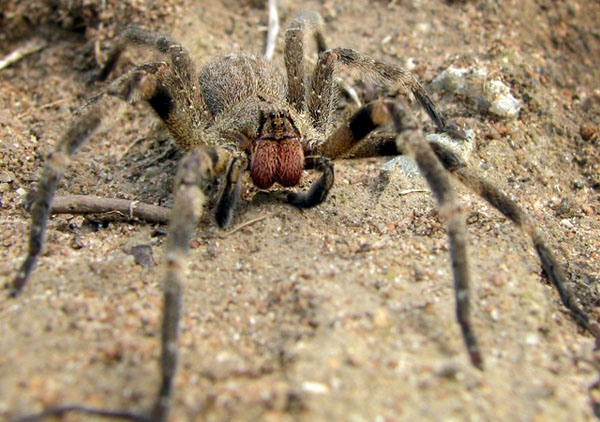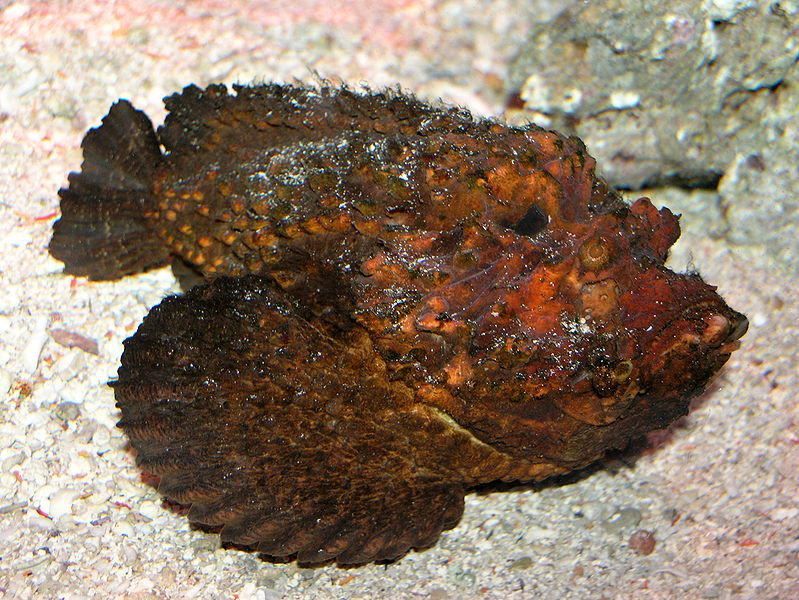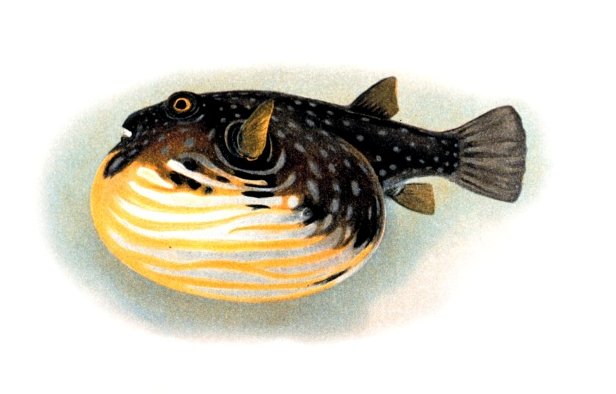World Records 2010 as the world's most venomous spider. Aside from causing intense pain, the venom of the spider can also cause priapism in humans. Erections resulting from the bite are uncomfortable, can last for many hours and can lead to impotence. A component of the venom is being studied for use in erectile dysfunction treatments.
The amount of P. nigriventer venom necessary to kill a 20 g mouse has been shown to be only 6 μg intravenously and 134 μg subcutaneously as compared to 110 μg and 200 μg respectively for Latrodectus mactans (Southern black widow). This ranks Phoneutria venom among the most deadly spider venoms to mice. Laboratory mice subjected to P. nigriventervenom experienced intense penile erections before succumbing to the toxin.
Inland Taipan
The Inland Taipan's venom consists of Taipoxin and protease enzymes, the average quantity of venom delivered by this species is 44 mg and the maximum dose recorded is 110 mg. The median lethal dose (LD50) for mice is 2 μg/kg (ppb) for pure Taipoxin and 30 μg/kg (ppb) for the natural venom mixture. Its venom consists mostly of neurotoxins. All reported bite victims have been treated with antivenom. As of late 2003, all positively identified inland taipan bite victims have been herpetologists handling the snakes for study, and none have been fatal.
The amount of P. nigriventer venom necessary to kill a 20 g mouse has been shown to be only 6 μg intravenously and 134 μg subcutaneously as compared to 110 μg and 200 μg respectively for Latrodectus mactans (Southern black widow). This ranks Phoneutria venom among the most deadly spider venoms to mice. Laboratory mice subjected to P. nigriventervenom experienced intense penile erections before succumbing to the toxin.
The Inland Taipan's venom consists of Taipoxin and protease enzymes, the average quantity of venom delivered by this species is 44 mg and the maximum dose recorded is 110 mg. The median lethal dose (LD50) for mice is 2 μg/kg (ppb) for pure Taipoxin and 30 μg/kg (ppb) for the natural venom mixture. Its venom consists mostly of neurotoxins. All reported bite victims have been treated with antivenom. As of late 2003, all positively identified inland taipan bite victims have been herpetologists handling the snakes for study, and none have been fatal.
Blue-Ringed Octopus
The blue-ringed octopus is 12 to 20 cm (5 to 8 inches), but its venom is powerful enough to kill humans. There is no blue-ringed octopus antivenom available.
The octopus produces venom that contains tetrodotoxin, 5-hydroxytryptamine, hyaluronidase, tyramine, histamine, tryptamine, octopamine,taurine, acetylcholine, and dopamine. The major neurotoxin component of blue-ringed octopus venom was originally known as maculotoxin but was later found to be identical to tetrodotoxin, a neurotoxin which is also found in pufferfish and cone snails that is 10,000 times more toxic than cyanide. Tetrodotoxin blocks sodium channels, causing motor paralysis and respiratory arrest within minutes of exposure, leading to cardiac arrest due to a lack of oxygen. The toxin is produced by bacteria in the salivary glands of the octopus.
Box Jellyfish
King Cobra
During a bite, venom is forced through the snake's half-inch (1.25 cm) fangs into the wound, and quickly attacks the victim's central nervous system, inducing severe pain, blurred vision, vertigo, drowsiness, and paralysis. Envenomation progresses to cardiovascular collapse, and the victim falls into a coma. Death soon follows due to respiratory failure.
Synanceia
Its venom causes such a severe pain that the victims of its sting want the affected limb to be amputated. It is described as the worst pain known to man. It is accompanied with possible shock, paralysis, and tissue death. If not given medical attention within a couple of hours It can be fatal to humans. Stonefish stores its toxins in gruesome-looking spines that are designed to hurt would-be predators.
It is not believed that puffers produce toxins themselves, as puffer fish kept in tanks or fish farms are totally free of either toxin. The gastric contents of shellfish prey are believed to carry the toxins or their precursors, which are stored in the puffers organs.
Saxitoxin, the cause of paralytic shellfish poisoning and red tide can also be found in certain puffers.










No comments:
Post a Comment